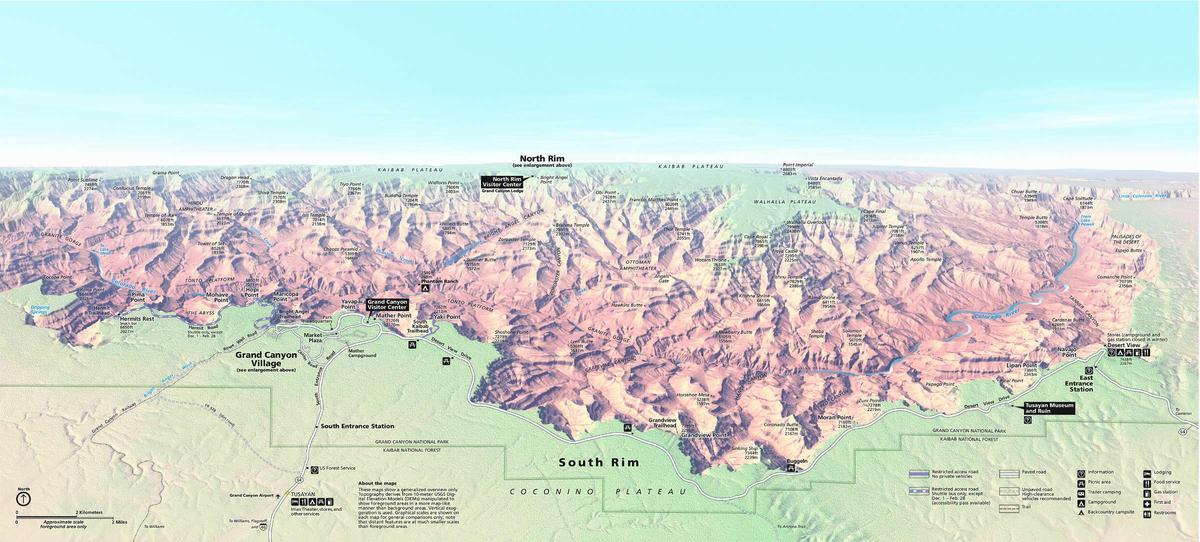Grand Canyon NP--Roosevelt Point
Grand Canyon NP--Roosevelt Point
North Rim, Arizona 86052
Official WebsiteNorth Rim webpage
Grand Canyon National Park website
Grand Canyon National Park maps
Tips for Birding
In-depth information is found on the Grand Canyon National Park website.
About this Location
Roosevelt is a relatively recent addition to the north rim points, one not shown on many maps. It was dedicated in 1990 to commemorate the 26th president, who was instrumental in the creation of Grand Canyon National Park in 1919, and is located close to the road about halfway between Bright Angel Point and Cape Royal, just as the highway makes a big 180° bend while approaching the canyon edge.
From the small roadside parking area, a short trail leads downhill to several wooden benches at the viewpoint, which is at the upper end of a long, thin ridge that extends 4 miles eastwards, descending several thousand feet in a series of mesas and buttes. The panorama is impressive enough though views are slightly restricted, as the point does not project outwards very far, a few trees rise up in some directions, and the main ridge hides much of the canyon to the north.
The land to the east of Roosevelt Point rises a little to 8,388 foot Tritle Peak, an isolated slab of white Kaibab limestone, then the ridge angles down steeply towards several red buttes at a much lower elevation. The main drainage in view, just south of the ridge, is Kwagunt Creek, which is quite narrow at its upper end but lower down becomes very wide, surrounded by gently sloping hillsides rather than the usual vertical cliffs. Despite the high ridge, a fair amount of the scenery to the north is visible including the furthest section of the Grand Canyon, where the Colorado River forms an unbranched gorge just a mile or so across, cutting into the flat desert plain between the Vermilion and Echo Cliffs.
About Grand Canyon National Park
See all hotspots at Grand Canyon National Park
Grand Canyon is considered one of the finest examples of arid-land erosion in the world. Incised by the Colorado River, the canyon is immense, averaging 4,000 feet deep for its entire 277 miles. It is 6,000 feet deep at its deepest point and 18 miles at its widest. However, the significance of Grand Canyon is not limited to its geology.
The Park contains several major ecosystems. Its great biological diversity can be attributed to the presence of five of the seven life zones and three of the four desert types in North America.
The five life zones represented are the Lower Sonoran, Upper Sonoran, Transition, Canadian, and Hudsonian. This is equivalent to traveling from Mexico to Canada.
The Park also serves as an ecological refuge, with relatively undisturbed remnants of dwindling ecosystems (such as boreal forest and desert riparian communities). It is home to numerous rare, endemic (found only at Grand Canyon), and specially protected (threatened or endangered) plant and animal species.
Over 1,500 plant, 355 bird, 89 mammalian, 47 reptile, 9 amphibian, and 17 fish species are found in the park.
Content from Official Website and Grand Canyon National Park website
 Grand Canyon Panorama Map
Grand Canyon Panorama Map